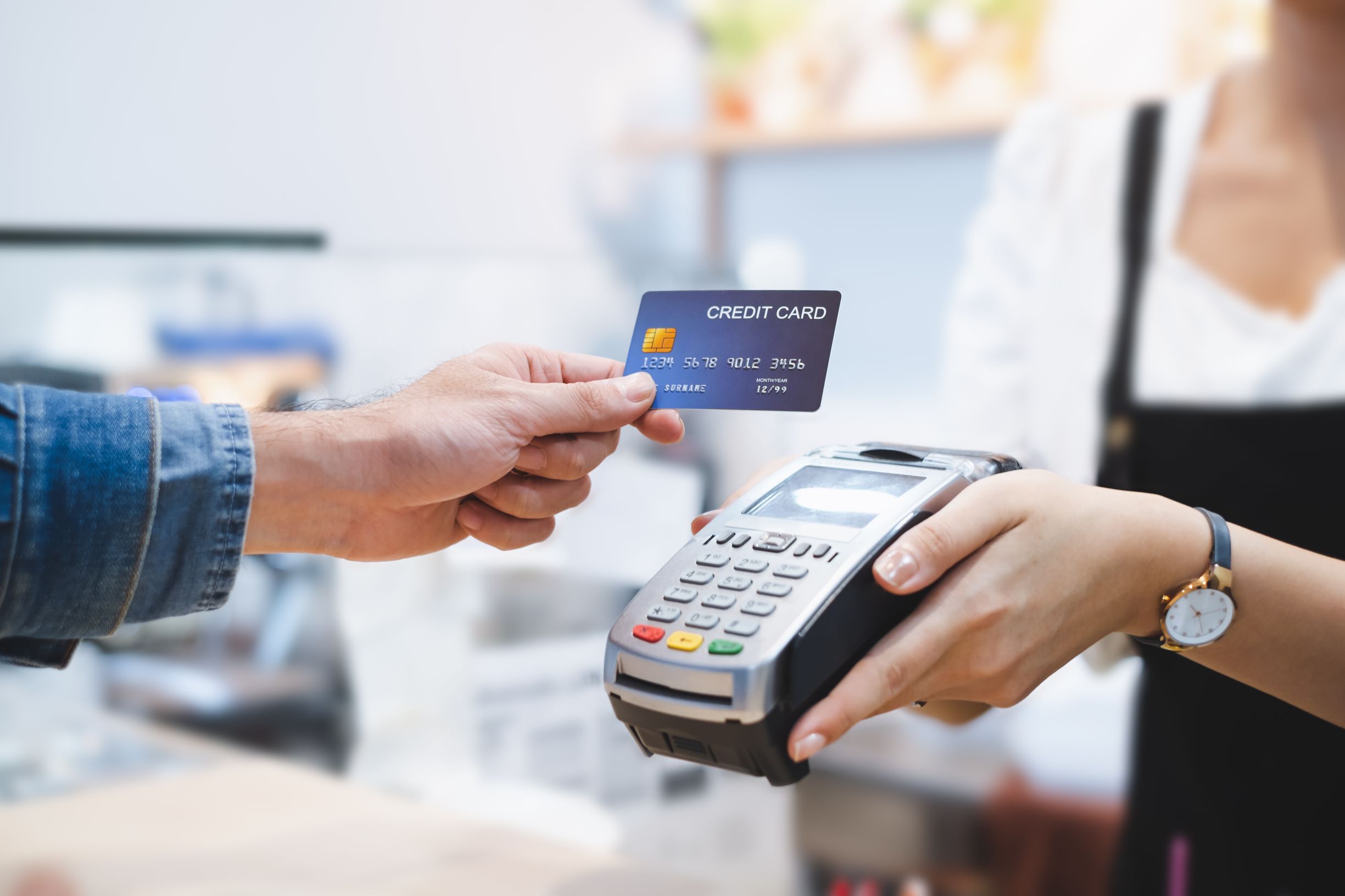Global Loyalty Trend Gaining Momentum in the Canadian Market
November 25, 2020

We’re living in a digital world. Many of the processes and services we interact with daily have shifted online, driving consumers to change their way of thinking and acting and, in turn, pushing brands to rethink their marketing strategies. This is particularly prevalent in the currency space. Just as payments have transitioned largely from in-person to digital, loyalty programs have evolved from a piece of paper that retailers stamped, to a card we carry in our wallets and/or digital wallets.
This evolution continues, as card-linked offers (CLO) – an up and coming capability in the loyalty space – garner rapid adoption across the globe. CLO technology allows consumers to link their loyalty account directly to their payment card so that they automatically receive rewards for their transactions; it also eliminates the need for consumers to carry and present a separate loyalty card when paying at online or offline merchants. CLO programs are proven to have significant benefits for both consumers and merchants, as consumers gain increased opportunities to be rewarded, while merchants benefit from an additional marketing channel with no impact to point-of-sale systems or operational processes.
Given the convenience, ease of use and accessibility, CLO technology is already being recognized globally. According to a recent report from The CardLinx Association, adoption of CLO in countries such as the United States, China, Japan, Germany, France, the United Kingdom and South Korea have reached mainstream usage as merchants have integrated it within their marketing programs, and are allocating an increasingly large portion of their budgets to deploying card-linked offers. Canada is expected to follow suit as merchants keenly look for new ways to reach and provide value to their online and in-store consumers.
As adoption accelerates in Canada, CLO will likely bring forward questions on the cost of integration, which continues to be a key concern for organizations and one that has only been amplified amid COVID-19. However, cost is actually one of CLO’s strongest benefits to merchants. The technology requires minimal integration and doesn’t require a major upfront cost by investing in point-of-sale systems. It’s also low risk, as merchants only need to confirm they want to deploy an offer, and the program operator handles the issuance and targeting. As well, payment is typically structured as a commission-based model, meaning retailers only pay when they see results, and participating merchants get access to valuable customer data provided by their CLO program.
In our current pandemic-driven climate, in addition to restaurants, merchants across many industries are looking for new capabilities that can reduce unnecessary friction at the register. Cashiers are reluctant to accept more cards than necessary to process payment, and consumers are decreasing the number of card swipes (i.e. both payment and loyalty) as a way to spend less time at the register and exit the store as quickly as possible. CLO removes this barrier by ensuring consumers are still rewarded for their transaction while simultaneously providing the merchant with customer data.
This has undoubtedly proven to be successful internationally, and with the exponential growth and acceptance of CLO that we’ve seen, we anticipate the adoption in Canada to rapidly increase as both merchants and consumers recognize its benefits. Loyalty programs and, specifically, CLO programs are the next phase in an industry that is evolving to meet consumers’ growing need for greater flexibility and security. While Canada hasn’t adopted CLO at the same pace as other markets, there’s no doubt that we’re at an advantage as this allows time for organizations to study the use cases and bring the best aspects to the Canadian market.
Have questions or looking to connect further? Get in touch at businessdevelopment@loyalty.com.
This evolution continues, as card-linked offers (CLO) – an up and coming capability in the loyalty space – garner rapid adoption across the globe. CLO technology allows consumers to link their loyalty account directly to their payment card so that they automatically receive rewards for their transactions; it also eliminates the need for consumers to carry and present a separate loyalty card when paying at online or offline merchants. CLO programs are proven to have significant benefits for both consumers and merchants, as consumers gain increased opportunities to be rewarded, while merchants benefit from an additional marketing channel with no impact to point-of-sale systems or operational processes.
Given the convenience, ease of use and accessibility, CLO technology is already being recognized globally. According to a recent report from The CardLinx Association, adoption of CLO in countries such as the United States, China, Japan, Germany, France, the United Kingdom and South Korea have reached mainstream usage as merchants have integrated it within their marketing programs, and are allocating an increasingly large portion of their budgets to deploying card-linked offers. Canada is expected to follow suit as merchants keenly look for new ways to reach and provide value to their online and in-store consumers.
Increasing value through streamlined integration
While marketing efforts have increasingly focused on digital in recent years, there’s no doubt the pandemic pushed this new reality to the forefront. In our new, almost entirely online-driven environment, merchants continue to look for channels they can leverage to grow brand awareness and continue attracting new consumers. CLO is a great way to bridge this gap while working in concert with existing digital marketing initiatives. Demonstrating demand for this type of technology, the CardLinx report found that card-linked marketing is the second most preferred channel after social media marketing, ahead of television advertising and affiliate marketing.As adoption accelerates in Canada, CLO will likely bring forward questions on the cost of integration, which continues to be a key concern for organizations and one that has only been amplified amid COVID-19. However, cost is actually one of CLO’s strongest benefits to merchants. The technology requires minimal integration and doesn’t require a major upfront cost by investing in point-of-sale systems. It’s also low risk, as merchants only need to confirm they want to deploy an offer, and the program operator handles the issuance and targeting. As well, payment is typically structured as a commission-based model, meaning retailers only pay when they see results, and participating merchants get access to valuable customer data provided by their CLO program.
Reducing friction in consumers’ and merchants’ day-to-day lives
The integration of CLO will benefit many sectors; however, if there is one that has come out on top, it’s the restaurant and quick-service space. In an industry where time equals money, providing loyalty-driven offerings like CLO are extremely beneficial in reducing extra steps at payment, while increasing visits and money spent with every transaction. Unsurprisingly, the report found that 21 per cent of survey respondents selected restaurants as the top merchant category for CLO, in large part due to most patrons paying by credit card to gain value on their discretionary spending. While this data is internationally focused, we see restaurants leveraging CLO’s benefits within Canada in the years to come.In our current pandemic-driven climate, in addition to restaurants, merchants across many industries are looking for new capabilities that can reduce unnecessary friction at the register. Cashiers are reluctant to accept more cards than necessary to process payment, and consumers are decreasing the number of card swipes (i.e. both payment and loyalty) as a way to spend less time at the register and exit the store as quickly as possible. CLO removes this barrier by ensuring consumers are still rewarded for their transaction while simultaneously providing the merchant with customer data.
What’s next?
As CLO’s adoption and usage in Canada increases, we expect digital security will be a paramount concern for organizations and consumers. CLO programs that are being leveraged by consumers internationally and here in Canada are being built with stringent security features to protect user data and ensure information can only be viewed by the appropriate party.This has undoubtedly proven to be successful internationally, and with the exponential growth and acceptance of CLO that we’ve seen, we anticipate the adoption in Canada to rapidly increase as both merchants and consumers recognize its benefits. Loyalty programs and, specifically, CLO programs are the next phase in an industry that is evolving to meet consumers’ growing need for greater flexibility and security. While Canada hasn’t adopted CLO at the same pace as other markets, there’s no doubt that we’re at an advantage as this allows time for organizations to study the use cases and bring the best aspects to the Canadian market.
Have questions or looking to connect further? Get in touch at businessdevelopment@loyalty.com.
- AIR MILES
- Loyalty Strategy
- loyalty program
- Card Linked Offers
Related insights

Blog
AIR MILES and Shell Canada reward Canadians as they get back on the road
The impact that COVID-19 has had on Canadians can’t be overstated. AIR MILES is proud to continue finding new ways to help Collectors.

Blog
Pointshogger interviews Todd Gulbransen, new SVP at AIR MILES
AIR MILES welcomes Todd Gulbransen as new SVP of Client Services and Strategic Partnerships. Learn more about him and his plans.

Blog
LoyaltyOne Recognized as one of Canada's Greenest Employers 2021
We are proud to be selected as one of Canada's Greenest Employers 2021 by MediaCorp Canada.
